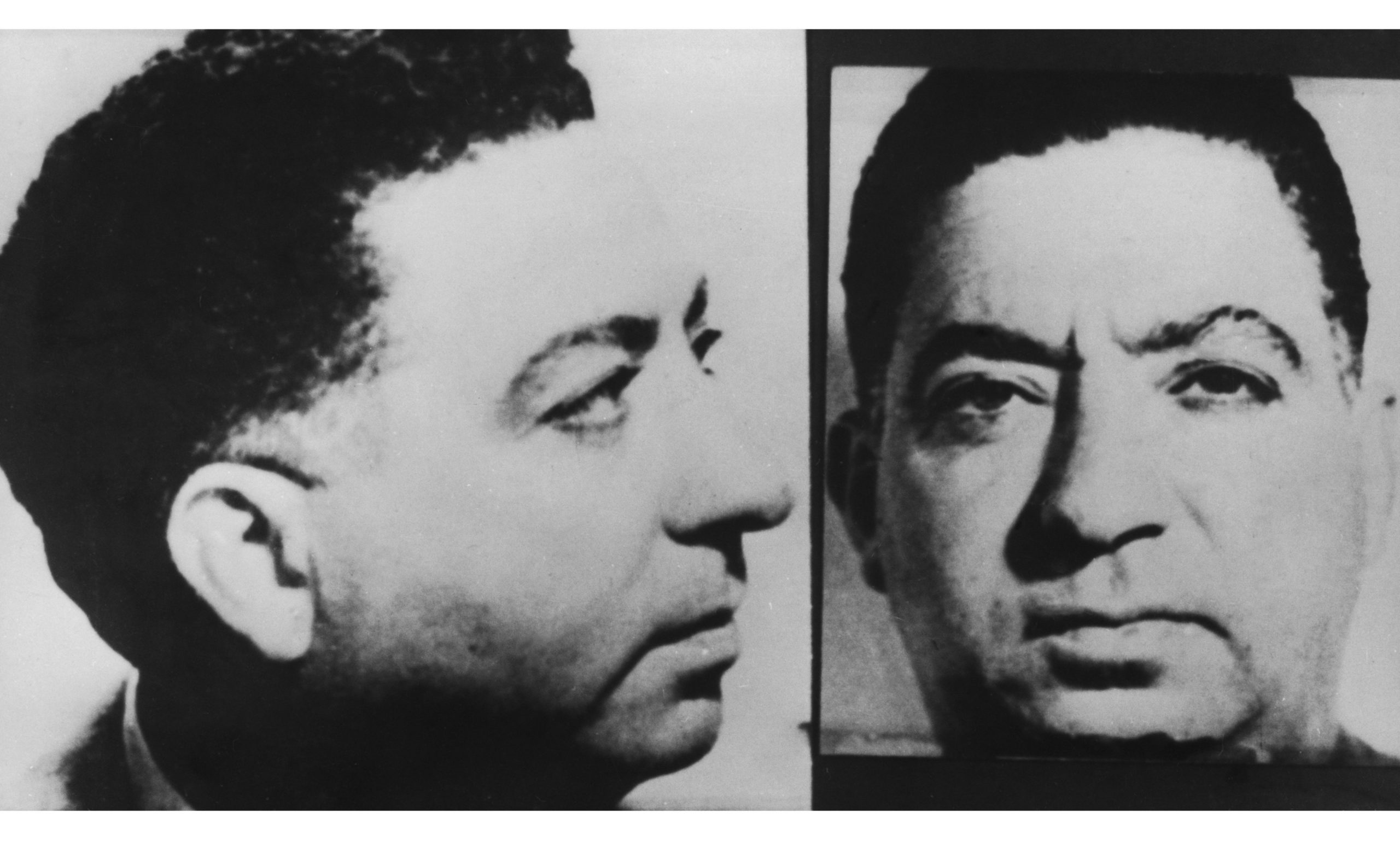Tsafendas and the tapeworm
It suited the apartheid narrative to label Verwoerd’s assassin as deranged rather than what he was, a freedom fighter who had slipped under the regime’s radar.
Author:
14 September 2018

“The tapeworm made him do it.” For decades this has been a common South African refrain – repeated from schools to watering holes – to dismiss Dimitri Tsafendas’s 1966 assassination of apartheid’s architect, Hendrik Verwoerd, as nothing more than the deranged actions of a man ruled by an intestinal parasite.
But Tsafendas – politicised early as an anti-fascist, anti-colonial communist – did not mention the tapeworm in the two statements he made to police after the assassination.
The parliamentary messenger maintained his murder of Verwoerd, whom he had previously described as “Hitler’s best student”, was a political act aimed at triggering “a change of policy” away from apartheid.
He would repeat this to journalists and filmmakers while spending 23 years in solitary confinement on death row in Pretoria Prison, as it was called then, close enough to the execution chambers to hear the cries and screams of those being hanged.
Law academic John Dugard said the tapeworm narrative was part of a “cover-up” that suited the apartheid political structures left after Verwoerd’s death. With former Constitutional Court justice Zak Yacoob, human rights lawyers George Bizos and other lawyers, Dugard has petitioned Minister of Justice and Correctional Services Michael Masutha to officially revise history books to remember Tsafendas as a freedom fighter.
“The apartheid regime had two reasons for portraying Tsafendas to be insane,” said Dugard in a submission made to the minister in April 2018.
“First, the regime wished to suggest that no one in his right mind could kill such a wonderful leader as Verwoerd. Secondly, there was the security aspect. The security apparatus, led by the minister of justice and police, John Vorster [who succeeded Verwoerd as prime minister], wished to avoid accountability for allowing a political revolutionary to be employed in a position close to the prime minister. So it was that the media and the legal proceedings were manipulated to present Tsafendas as a mentally deranged person dictated to by a tapeworm,” Dugard stated.
Peregrinating around the world
But, although the tapeworm first appears 20 days after the assassination, when Tsafendas met his defence lawyers for the first time, it is a leitmotif in a life described by Portugal’s security police in their file on him as “an authentic adventurer novel, peregrinating around the world”.
Tsafendas had previously used the tapeworm and “play acting” madness to get food and shelter during a peripatetic life that sometimes saw him down and out in places such as Hamburg, London and Lisbon.
This is revealed in the research, including 16 gigabytes of government files and records from South African and Portuguese national archives annexed to the petition by Harris Dousemetzis, who recently completed his doctorate at Durham University in the UK. His book on Tsafendas is set to be published in South Africa in November.
The young Tsafendas spent a large part of his adult life wandering from the United States to Germany, Turkey, Portugal and Greece. He was banned from entering Mozambique because of his “advertising” for the country’s independence from Portuguese colonial rule, and from South Africa for being an inveterate Red and a person of mixed race.
Along the way, he joined the merchant navy and the anti-fascist Greek army in his father’s homeland. He visited sites from the American War of Independence in the United States and Karl Marx’s grave in London. There he also joined anti-apartheid demonstrations – in one carrying a placard with a picture of a man dressed in a Klu Klux Klan sheet, labelled “Dr Verwoerd”.
A voracious reader with a “superior” or “gifted” IQ of 125, he became fluent in eight languages, including Czech, Turkish, Italian and the Munich dialect of German.
In 1942, with the end of World War II still three years away, he joined the merchant navy. In Canada, he wanted to change ships – not liking the crew’s propensity for marijuana, among other things – but was treated as a deserter. He was put on an explosives carrier in a convoy destined for the Allied troops in Europe, but escaped with four other crew members to the United States, where he was subsequently arrested.
Faked mental illness
Tsafendas was eventually detained at Grafton State Hospital, where a medical report noted that he had “faked mental illness”. According to interviews conducted by Dousemetzis, this was when the tapeworm first reared its head.
In the hospital, Tsafendas met Tom Tuff, an American who converted him to a Christian sect and told him about the “tapeworm” that had been affecting his sanity.
Feigning madness, with the tapeworm story as a key tactic, soon became Tsafendas’s fallback hustler instinct, kept at the hip for whenever he was down and out in one of the many cities he spent time working, reading, arguing and seemingly always finding time to teach young children English or history.
Unable to return to Mozambique or South Africa, where his family had moved in 1937, Tsafendas travelled in a state of flux, exile, without the solace of having the option of ‘home’.
He used the tapeworm to find shelter in London and Hamburg, and to get out of compulsory military service for Portugal, using it and his “madness” as an excuse to refuse serving in the army of Prime Minister António de Oliveira Salazar, whom he considered a “dictator”. Tsafendas later used his “play acting” in attempts to get his banning order lifted, pretending to authorities that his left-wing politics was a product of his madness.
Back in Africa
In 1963, Portugal finally granted Tsafendas amnesty and he was allowed to return to Mozambique. On his return, his family members remember his stepmother, Marika, rummaging through his suitcase and finding, among his clothes, a poster of Congolese liberation icon Patrice Lumumba, communist books, a book about insanity and psychiatry, and another about intestinal disorders.
After his arrival in Mozambique, Tsafendas’s family bribed the passport control officer at the South African consulate in Lourenço Marques, now Maputo, and he was soon in South Africa.
Tsafendas moved from Pretoria to Durban and then finally Cape Town, where, with a methodical coolness rather than any irrationality or insanity, he planned the assassination of Verwoerd in 1966.
Used in his defence, the madness and tapeworm narrative kept Tsafendas from being executed. It also allowed the apartheid state space to manoeuvre and maintain that their project remained a project of God, even if one of His “chosen” sons had been killed.
Madness as a tool of dismissal
Madness had been previously used to dismiss the 1960 assassination attempt on Verwoerd by David Pratt, a British-born farmer whose family had moved to South Africa when he was four years old. Pratt, whose bullets Verwoerd survived, had strong links to the National Liberal Club in London.
The narratives around the lives and intentions of both Tsafendas and Pratt have been re-examined in a variety of fields, creating a small but important body of revisionist work. The artist Penny Siopis’s video installations, Master Is Drowning (2012), about Pratt, and Obscure White Messenger (2010), about Tsafendas, ask haunting questions of our memories and what we think we know. The title of her 2010 video is Nelson Mandela’s description of Tsafendas from his autobiography, Long Walk to Freedom (2008).
Filmmaker Liza Key’s documentary about Tsafendas, A Question of Madness (1998), includes interviews with Tsafendas, and is a substantive challenge to what continues to be accepted as historical ‘fact’: that a tapeworm told him to do it. But the evidence powerfully suggests Tsafendas was no madman when he killed.
This is the second in a two-part series on Dimitri Tsafendas.

